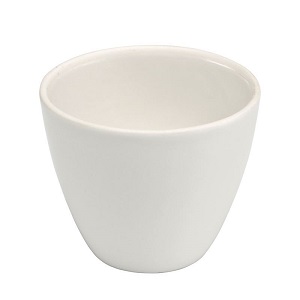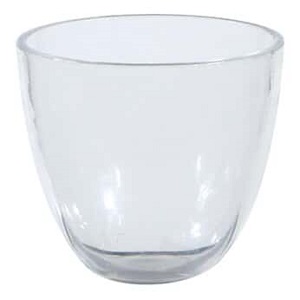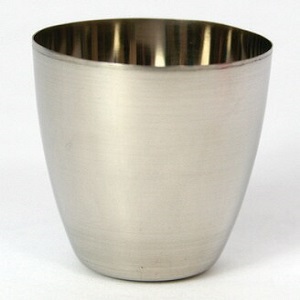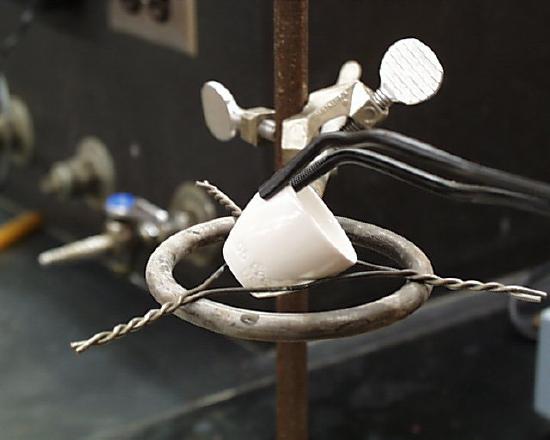A quick primer for porcelain crucible buyers
The porcelain crucible is a staple in many scientific laboratories, offering durability and resistance to high temperatures. These crucibles serve a variety of purposes, from high-temperature chemical reactions to melting substances. Below, we'll explore their diverse uses, compare them with other types of crucibles, and discuss their specific benefits and cleaning methods
What are the different types of porcelain crucible?
Porcelain crucibles come in various forms, each suited for specific applications:
- ✔ Bitumen crucibles are designed for bitumen and asphalt testing, featuring a high thermal and chemical resistance.
- ✔ Gooch crucibles incorporate a perforated bottom for filtration tasks, typically used in conjunction with a vacuum filtration setup.
- ✔ High form crucibles are (surprise surprise!) taller than most, with sides that extend upwards, ideal for projects requiring more vertical space for reactions.
- ✔ Wide form crucibles have a wider mouth and lower height, suitable for evaporation tasks and ensuring easier access for stirring and adding materials.
You can use the filters on the side of this page to remove the types you don't want from the curated collection above.
How is a porcelain crucible used in the lab?
Porcelain crucibles are versatile tools used in laboratories for:
- Heat treatments: They are ideal for conducting high-temperature chemical reactions without risk of breaking.
- Melting substances: Crucibles can withstand the temperatures required to melt or sinter small quantities of metals and other substances.
- Calcination: Used for calcining, where samples are heated to high temperatures to induce thermal decomposition.
- Ashing: Helpful in ashing procedures, such as burning off the organic substances in a sample to leave a mineral residue.
- Drying samples: They can be used to dry substances, ensuring that any moisture is evaporated at high temperatures.
- Evaporating liquids: Efficient for rapidly evaporating excess solvents to leave behind a concentrated sample.
- Temperature Resistance testing: Ideal for testing the heat resistance of various chemical compounds.
- Analytical work: Used in analytical chemistry for gravimetric analysis where precision and temperature stability are crucial.
Comparing crucible materials: Porcelain, glass, and metal
Each type of crucible-porcelain, glass, and metal-has unique properties suitable for specific lab applications:
Porcelain crucibles: Offer excellent thermal shock resistance and can withstand repeated changes in temperature without cracking.
Glass crucibles: Are primarily used for handling liquids and can be used at lower temperatures. They offer chemical resistance and visibility of contents.
Metal crucibles: Made typically from platinum or nickel, these are used for applications requiring very high temperatures. They are more durable and less brittle but are also more expensive.
How is each type of crucible most commonly used?
Porcelain crucibles are best for high-temperature applications that involve solid samples, such as sintering, ashing, or calcination. Glass is ideal for chemical reactions where visual monitoring is necessary, as well as for handling corrosive chemicals at moderate temperatures. Metal crucibles are predominantly used in melting and alloying metals due to their ability to withstand extremely high temperatures and their non-reactive nature.
Generally, if you're looking for crucibles here, you probably already know what material you're looking for because it's outlined in your SOP.
What are the most important benefits of a porcelain crucible?
Porcelain crucibles offer several compelling benefits. If you've used them before, you already know and that's why you're back for more:
- ✔ High thermal shock resistance: Can rapidly change temperature without damage to the vessel.
- ✔ Chemical stability: Resistant to many acids and bases,except hydrofluoric acid.
- ✔ Cost-effectiveness: More affordable compared to metal crucibles and more durable compared to glass.
- ✔ Reusability: Can be used multiple times with proper handling and cleaning.
- ✔ Uniform heating: Provides even distribution of heat, which is critical in many laboratory applications.
How to clean your porcelain crucibles
Cleaning a porcelain crucible involves a few straightforward steps:
- Cool it down: Always allow the crucible to cool to room temperature before cleaning to avoid thermal shock. It's highly resistant to this kind of shock, but there's no reason to put any more stress on it than you already do.
- Remove the residue: Gently scrape out any solid residues using a wooden or plastic tool to avoid scratching the porcelain.
- Soak it as long as you want: Soak the crucible in an appropriate cleaning solution, such as diluted hydrochloric acid or a basic cleaning agent, depending on the residue.
- Scrub like you mean it: Use a soft brush to scrub the crucible inside and out.
- Rinse and dry: Thoroughly rinse with distilled water and dry in a drying oven or air dry.
Porcelain crucibles are an invaluable tool in the laboratory, blending affordability with a broad range of applications. Whether you're conducting high-temperature experiments or precise analytical measurements, these crucibles provide a reliable solution that meets the rigorous demands of scientific research.
If you can't find what you need in the curated selection above, get in touch with us. Our offline catalog is even more extensive than our online catalog, so we're certain we can find what you need today.











